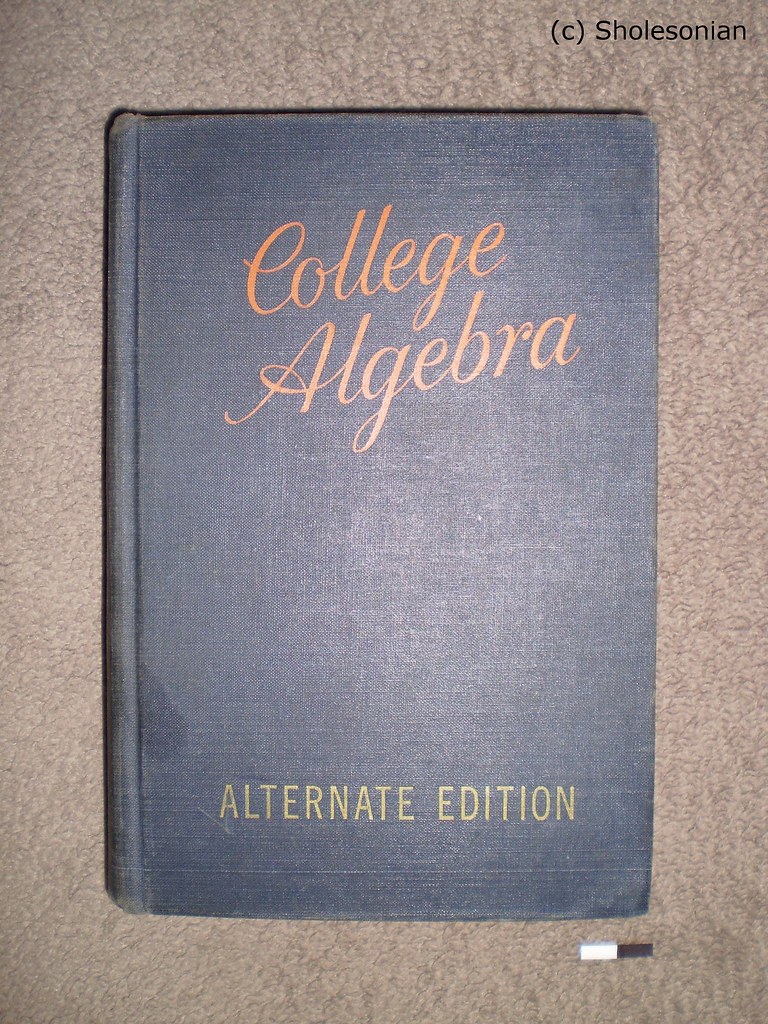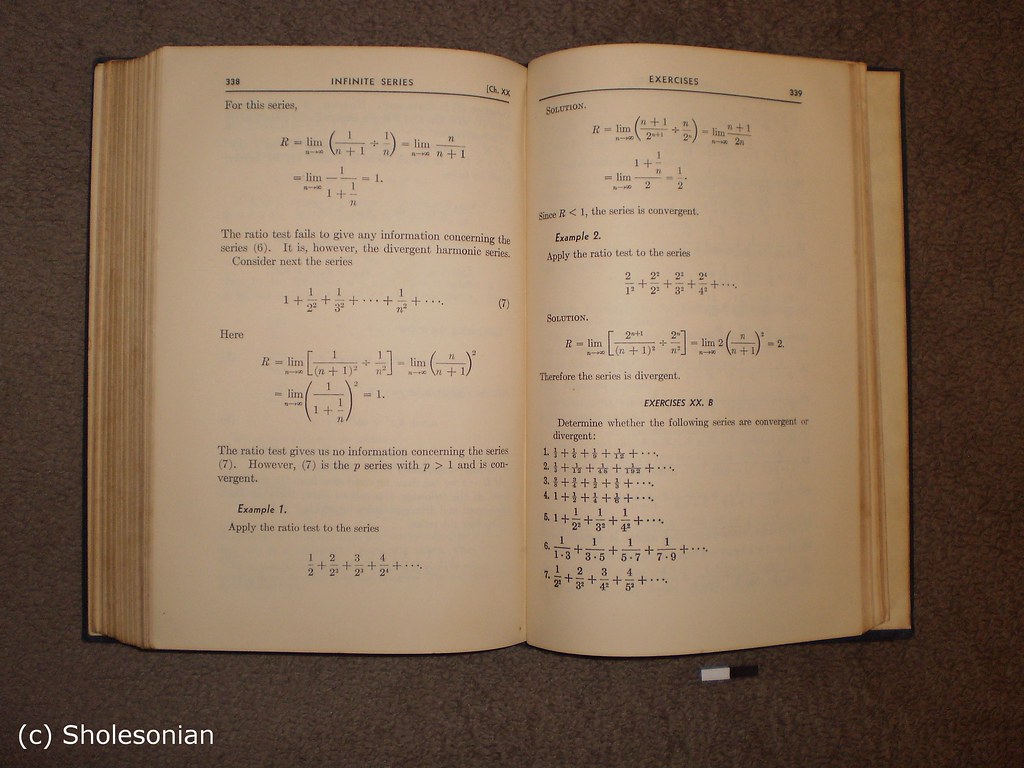PUB 065
College Algebra: Alternate Edition
By: Paul R. Rider, Ph. D.
Media: Textbook
Year: 1947
Details: The Macmillan Company
It's been awhile but we are back to regular posts from the collections. To start off we have this interesting old college mathematics textbook. I obtained this for the Publications Collection as I felt it demonstrated quite clearly the 1950's style, despite it being created a few years before that decade (1947 to be exact). This is "College Algebra: Alternate Edition" by Paul R. Rider, Ph. D. a professor of mathematics at Washington University and was published by the Macmillan Company in New York. While it was copyrighted in 1947 it was actually printed in 1951 during their fourth printing.
The first part of the book is a review of elementary algebra: addition, division, signs, exponents, polynomials and functions. Chapter II focuses on linear equations (think equations with multiple variables that are of degree 0 or 1 and don't have multiple variables being multiplied together, i.e. 12 = 4x + 3y - 2z). Chapter III is some elementary factoring with Chapter IV going into fractions. It then goes into more detail with exponents and radicals before switching over to quadratic equations (i.e. y = x^2) and then solving equations involving quadratics such as when the lines y=x and y=x^2 intersect. Chapters VIII and IX focus on inequalities, proportions, and variations. The next few chapters go into binomials, progressions, complex and imaginary numbers, general equation theories and logarithms. Chapter XV takes a side step over into economics, teaching about compound interest and annuities but then switches over to permutations, combinations, probability, determinants, partial fractions, series, and finite differences, with answers to odd number problems in the back.
You need to keep in mind that this is way before calculators and computers so everything needs to be done by hand. This isn't much different than today where students still need to learn how to do the math without the aid of calculators but some of the material is unnecessary today, such as the powers and roots table in the back. Below is a section of the book that covers infinite series.



No comments:
Post a Comment